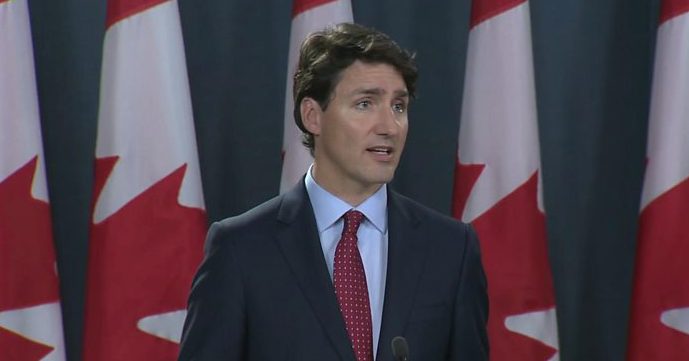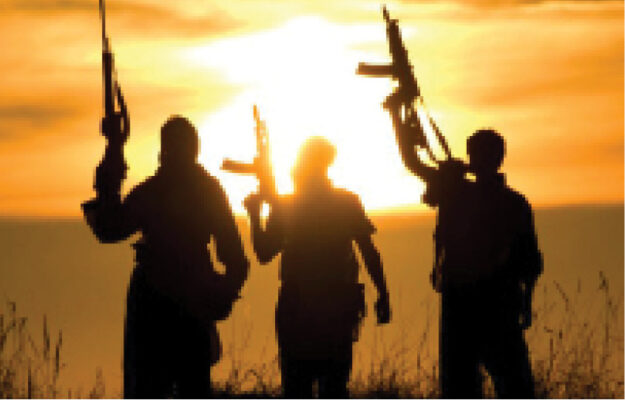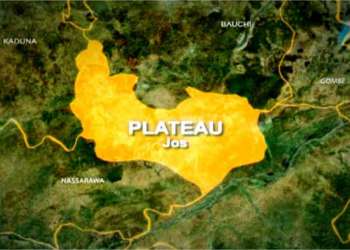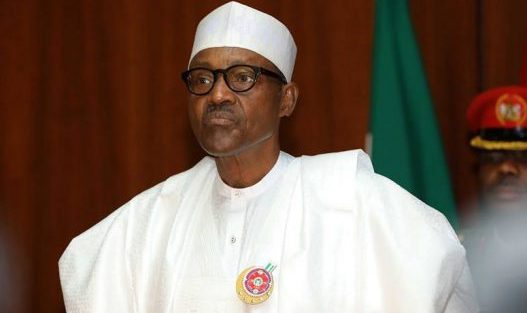Massive US tariffs have come into force as condemnation of the Trump administration’s move intensifies.
Criticism of the import tax on steel and aluminium from the EU, Canada and Mexico was joined by top congressional Republicans.
Leaders from affected nations reacted furiously, setting out tit-for-tat tariffs on the US, ranging from steel to sleeping bags and ballpoint pens.
According to reports, France’s president, Mr. Emmanuel Macron, told Mr. Trump by phone that the US move was “illegal,” insisting that the EU would respond in a “firm and proportionate manner.”
Mr. Trump has justified the tariffs, which came into force at midnight Washington DC time (04:00 GMT Friday), by arguing that US steel and aluminium producers are vital to national security and threatened by a global supply glut.
That rationale was rejected by allies.
Canadian Prime Minister Justin Trudeau described that claim as an affront.
“That Canada could be considered a national security threat to the United States is inconceivable,” he said.
UK International Trade Secretary Liam Fox said the 25% levy on steel was “patently absurd”.
He branded the Trump administration’s move as “just protectionism,” adding: “It would be a great pity if we ended up in a tit-for-tat trade dispute with our closest allies.”
Mexican Foreign Minister Luis Videgaray said his country would also impose duties: “Mexico’s position on trade, or on immigration, or on security, or on whatever area of co-operation with the United States, will not vary, not because of offensive rhetoric nor unjustified unilateral measures like this type. We will continue to defend the interests of Mexico, just as we have done until now.”
Opposition to the tariffs was joined by congressional Republicans. “I disagree with this decision,” House Speaker Paul Ryan, the most influential Republican in Congress, said in a statement.
“Today’s action targets America’s allies when we should be working with them to address the unfair trading practices of countries like China,” he said.
Methane ice dunes found on Pluto by Nasa spacecraft

Scientists say they have found evidence of dunes of frozen methane on Pluto.
The research, which is published in the journal, Science, suggested that the distant world is more dynamic than previously thought.
Pluto’s atmosphere was believed to be too thin to create the features familiar in deserts on Earth.
The findings come from analysis of the startling images sent back by Nasa’s New Horizons mission, which flew close to Pluto in July 2015.
After an epic trek through the Solar System that took nearly a decade, New Horizons sped by at a speed of 58,536 km/h (36,373 mph), gathering data as it passed.
In their study, the researchers explain how they studied pictures of a plain known as Sputnik Planitia, parts of which are covered with what look like fields of dunes.
They are lying close to a range of mountains of water ice 5km high.
The scientists conclude that the dunes are 0.4-1km apart and that they are made up of particles of methane ice between 200-300 micrometers in diameter – roughly the size of grains of sand.
Tamaulipas crisis: Mexico seeks talks over ‘silenced’ zone
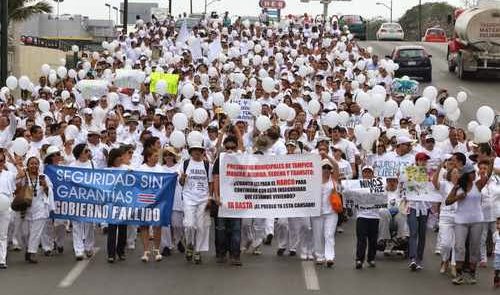
Mexico has requested urgent talks with the UN after a report linked security forces to mass disappearances in the north-eastern state of Tamaulipas.
The UN report said at least 21 people have gone missing since February after being detained by the security forces in and around Nuevo Laredo.
A number of reporters have been killed in Tamaulipas, with UN officials calling the state a “silenced zone.”
This week, Journalist Hector Gonzalez was found beaten to death in the state.
The Mexican government said it would take immediate measures to stop the violence and find those still missing.
It also asked for more information from the UN.
The UN published its report on Wednesday, documenting the disappearance of at least 21 people.
“Many of these people are reported to have been arbitrarily detained and disappeared while going about their daily lives.
“It is particularly horrific that at least five of the victims are minors, with three of them as young as 14. These crimes, perpetrated over four months in a single municipality, are outrageous,” the UN High Commissioner for Human Rights, Zeid Ra’ad al-Hussein, said.
READ ALSO: Foreign Titbits: 15 people injured in explosion at restaurant near Toronto
Arkady Babchenko: Suspect remanded in reporter’s hoax death case
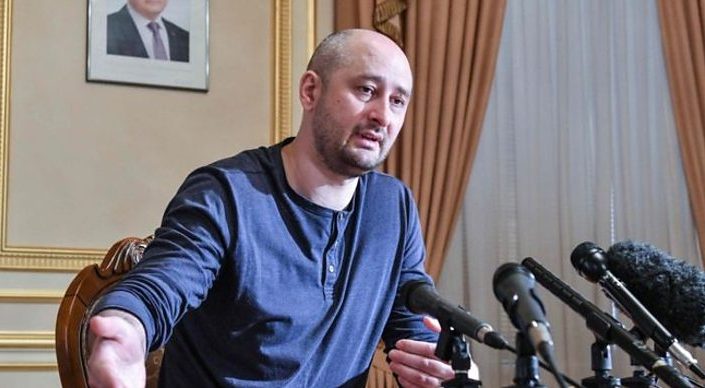
A Ukrainian court has remanded a businessman in custody on suspicion of plotting the murder of a Russian dissident journalist.
Borys Herman is alleged to have paid $15,000 (£11,300) to a man for killing Arkady Babchenko in Kiev.
He said he had had no intention of killing the reporter and had co-operated with the SBU security service.
The SBU faked Babchenko’s death on Tuesday, saying this helped to foil a Russian assassination plot.
Pig’s blood and a make-up artist were used to pull off the stunt, the journalist revealed on Thursday.
Babchenko said earlier that Mr. Herman, who works for a Ukrainian-German weapons company, had paid out for the assassination once the news of the “killing” had been made public.
The unidentified hired hitman had also been part of the elaborate sting operation, the SBU said.
Mr. Herman was remanded in custody for two months.
Ukraine has been sharply criticised for the hoax, with critics saying it gives Russia the moral high ground.
Moscow has described Ukraine’s sting operation as an act of provocation.
Babchenko is a former war correspondent who fled Russia in 2017.
NYT plans to return thousands of ISIL files to Iraq
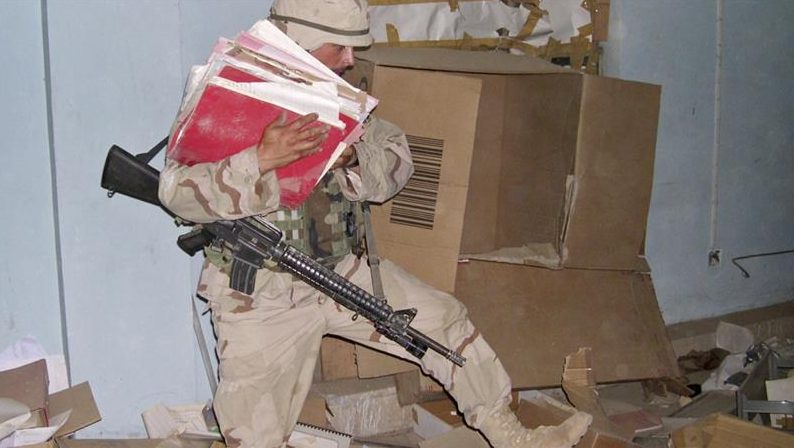
The New York Times said it will return thousands of documents its journalists “recovered” from Iraq.
The newspaper, which came under fire for removing the documents from the country, also said it would digitise the files and make them available to the public.
According to a statement on Thursday, NYT Correspondent Rukmini Callimachi, who has been covering the Islamic State of Iraq and the Levant (ISIL, also known as ISIS), noted that the newspaper is “seeking a partner to digitize” the documents and make them publicly available online.
The database would include at least 15,000 pages of documents Callimachi and her team obtained after ISIL’s defeat in Iraq.
The NYT also said it would return the original documents to the Iraqi government via its embassy in Washington, DC.
The announcement followed a backlash by academics and scholars who accused Callimachi and the newspaper of illegal and unethical practices after publishing an article called The ISIS files last month.
Callimachi, who was embedded with Iraqi military units, described in the published article how the documents were “recovered” with the Iraqi army’s assistance.
